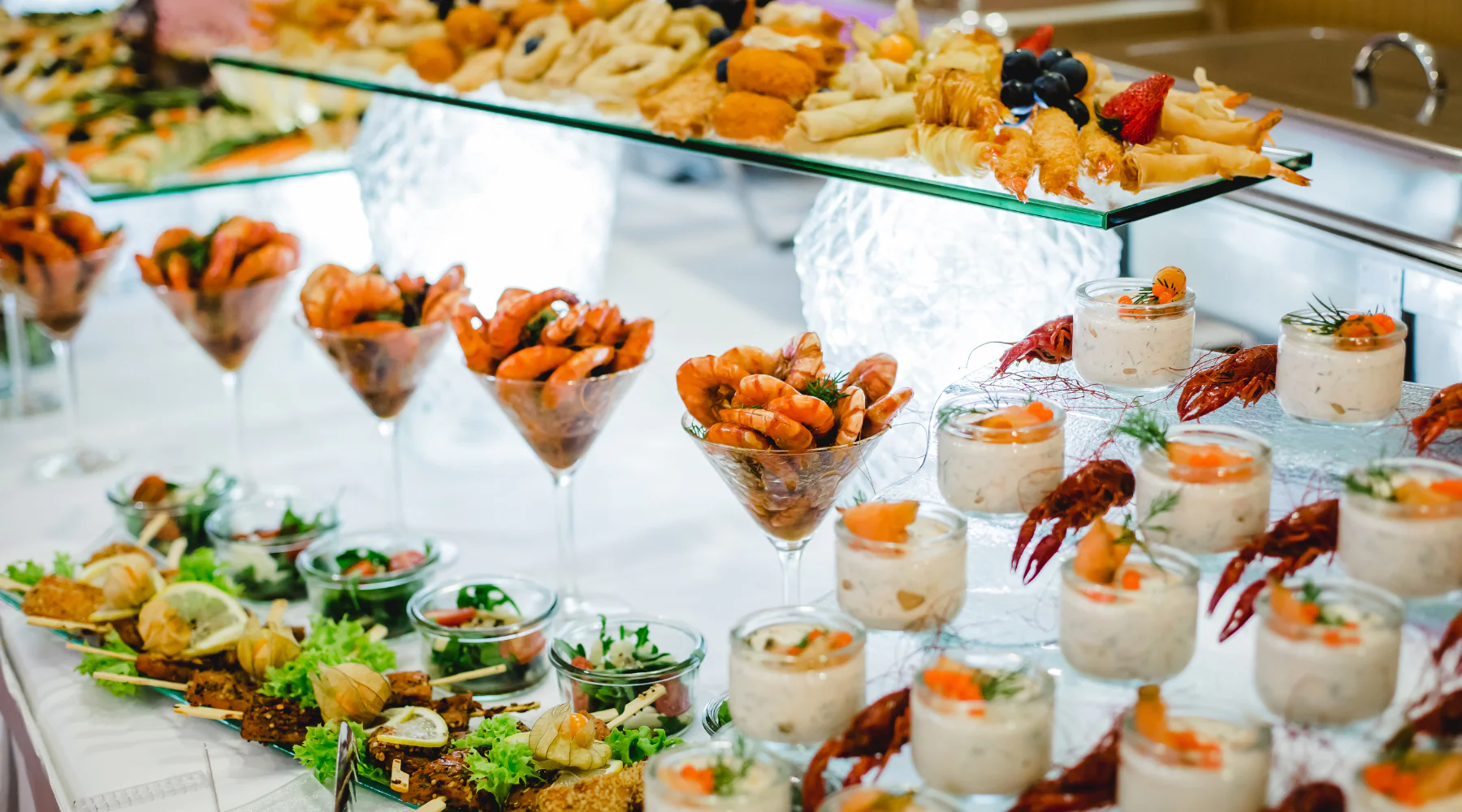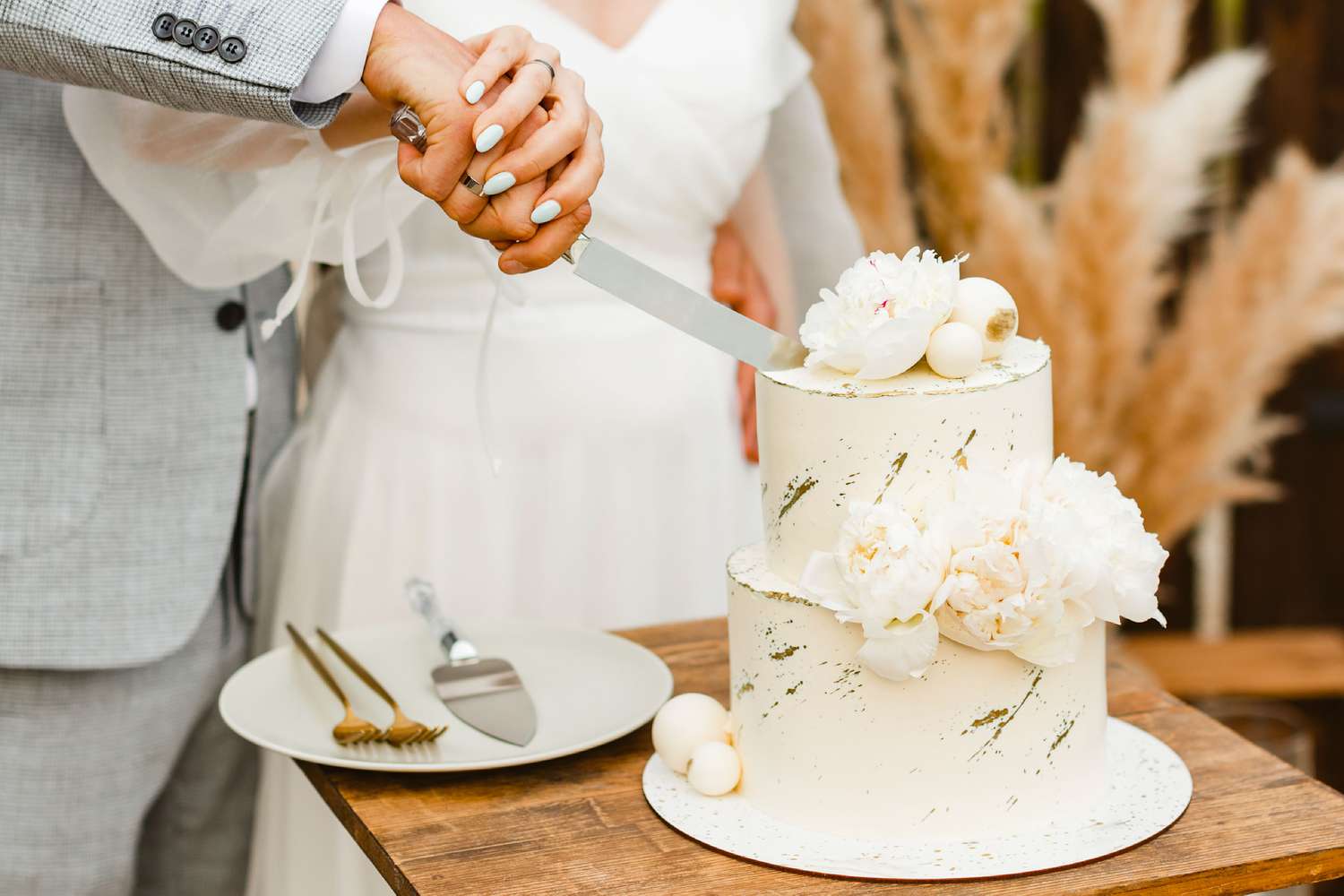Picture this: You’re floating down the aisle, dress sparkling, vows nailed, and then—bam—your bestie’s stuck nibbling plain lettuce because the menu didn’t account for her gluten intolerance. As someone who’s navigated wedding planning while dodging my own dairy sensitivity (and a cousin’s nut allergy meltdown at a family bash), I know the sting of a non-inclusive menu. Creating a wedding feast that welcomes everyone isn’t just kind—it’s a love letter to your guests, ensuring they’re all savoring the joy, not stressing over their plates. In 2025, with food sensitivities on the rise (think 1 in 10 adults with allergies), an inclusive menu is a must for a memorable, feel-good day. Let’s dive into how to craft a spread that’s delicious, safe, and screams “we thought of everyone,” blending practical tips, heartfelt stories, and a sprinkle of humor to keep your guests full and happy.
Why Inclusive Wedding Menus Matter
Your wedding menu is more than food—it’s a vibe, a shared moment where guests connect over flavors. Including options for food sensitivities shows you care, making everyone feel seen, from your vegan aunt to your gluten-free groomsman. I learned this when my dairy-free needs left me side-eyeing a cheese-heavy buffet at a friend’s wedding—let’s just say I bonded more with the bread basket than the dance floor.
An inclusive menu prevents health hiccups (nobody wants an EpiPen cameo) and elevates your day’s warmth. It’s a small effort for a big impact, ensuring every guest leaves with a full heart—and stomach.
Understanding Common Food Sensitivities
Knowledge is power when crafting an inclusive menu. Food sensitivities range from allergies (like nuts or shellfish) to intolerances (lactose, gluten) and lifestyle choices (vegan, keto). About 32 million Americans have food allergies, and celiac disease affects 1% of the population, so you’re likely hosting someone with needs.<grok:render type=”render_inline_citation”>22 My wake-up call? A guest’s peanut scare at my engagement party—now I triple-check labels.
Familiarize yourself with the big players: gluten, dairy, nuts, shellfish, soy, and eggs. This sets the stage for a menu that sidesteps risks while keeping flavor front and center.
Gluten Sensitivity and Celiac Disease
Gluten, found in wheat, barley, and rye, can trigger serious reactions for those with celiac disease or non-celiac gluten sensitivity. I saw this firsthand when my cousin swapped her dinner roll for rice at my wedding—her smile said it all. Offer gluten-free grains like quinoa or certified GF desserts to keep things safe.
Cross-contamination is a sneaky culprit, so ensure separate prep areas. It’s a small step that lets guests dig in without worry.
Dairy and Lactose Intolerance
Lactose intolerance affects about 68% of adults globally, making dairy-free options a crowd-pleaser.<grok:render type=”render_inline_citation”>19 My own dairy-free journey taught me to love coconut milk-based sauces—they’re creamy without the consequences. Swap butter for olive oil or offer dairy-free desserts like sorbet.
Label dishes clearly to avoid guesswork. It’s a lifesaver for guests who’d rather not interrogate the waitstaff mid-toast.
Nut Allergies
Nut allergies are serious—think anaphylaxis-level serious, affecting 1–2% of people.<grok:render type=”render_inline_citation”>22 A friend’s kid once had to skip dessert at a wedding due to hidden almonds; cue the sad face. Go nut-free for key dishes or offer safe alternatives like seed-based snacks.
Work with caterers to ensure nut-free zones in the kitchen. It’s about safety first, flavor second, and no one feeling left out.
Vegan and Vegetarian Needs
Vegan and vegetarian diets are booming—about 6% of Americans are vegetarian, and 3% are vegan in 2025.<grok:render type=”render_inline_citation”>27 My vegan bridesmaid raved about our mushroom risotto—it was her highlight. Include hearty plant-based options like stuffed peppers or vegan cakes that don’t skimp on taste.
Ensure these dishes aren’t just salads—give them main-character energy. It shows respect for choices and keeps everyone satisfied.
Steps to Create an Inclusive Wedding Menu
Crafting a menu that welcomes all starts with strategy, not stress. These steps blend practicality with 2025’s focus on personalized, inclusive dining, ensuring every guest feels like they’re at the VIP table. From my own planning chaos (and a near-miss with a shellfish dish), these tips are your guide to a feast that’s safe, scrumptious, and seamless.
Think of it like choreographing your first dance—plan early, communicate clearly, and leave room for joy. Here’s how to make every bite count for every guest.
1. Survey Your Guests Early
Kick things off by asking about dietary needs on your RSVP form—include a checkbox for allergies, intolerances, and preferences. My save-the-date included a “Food Needs” field, and it flagged a shellfish allergy I’d have missed. Digital tools like The Knot make this easy.<grok:render type=”render_inline_citation”>31
Follow up with key guests for specifics. It’s a proactive move that prevents last-minute menu scrambles and shows you care.
2. Collaborate with Your Caterer
Choose a caterer experienced in dietary accommodations—check reviews on Zola for pros who nail inclusivity.<grok:render type=”render_inline_citation”>29 I grilled my caterer on cross-contamination protocols, and their expertise saved us from a gluten-free gaffe. Share your guest list’s needs early.
Ask for sample menus with allergy-friendly options. A pro caterer will turn restrictions into creative, drool-worthy dishes.
3. Offer a Diverse Menu
Variety is your friend—think buffet or family-style with options for all. Our wedding had a vegan pasta station, gluten-free apps, and nut-free desserts, and guests raved about the choices. Include at least one safe dish per course, like a dairy-free soup or gluten-free bread.
Balance flavors so no one feels like they’re eating “special” food. It’s about inclusivity that tastes as good as it feels.
4. Label Dishes Clearly
Clear signage is a game-changer—label each dish with allergens (e.g., “Contains Dairy” or “Gluten-Free”). At my wedding, cute chalkboard signs made it easy for guests to navigate without playing 20 questions. Digital menus on WeddingWire can also list ingredients.<grok:render type=”render_inline_citation”>33
Train staff to answer questions confidently. It’s a small touch that builds trust and keeps the vibe stress-free.
5. Avoid Cross-Contamination
Cross-contamination can turn a safe dish into a risk—think shared fryers or cutting boards. My caterer used separate utensils for gluten-free dishes, which saved my celiac uncle from trouble. Request dedicated prep spaces and tools for allergen-free items.
Double-check with your venue’s kitchen team. It’s a behind-the-scenes effort that keeps everyone safe and smiling.
| Allergen | Common Culprits | Safe Alternatives | Pro Tip |
|---|---|---|---|
| Gluten | Bread, pasta, sauces | Quinoa, rice, GF flour | Check labels for hidden wheat in soy sauce. |
| Dairy | Cheese, cream, butter | Coconut milk, oat milk | Use olive oil for cooking to avoid butter. |
| Nuts | Desserts, pesto, granola | Sunflower seeds, tahini | Confirm nut-free oils with caterer. |
| Shellfish | Shrimp, crab, sauces | Chicken, tofu | Watch for fish sauce in Asian-inspired dishes. |
6. Include Kid-Friendly Options
Kids with sensitivities need love too—think simple, safe dishes like gluten-free chicken nuggets or dairy-free mac and cheese. My nephew’s joy over a nut-free cupcake was a wedding highlight. Keep portions small and flavors mild for picky eaters.
Work with your caterer to flag kid-safe options. It’s a win for parents and keeps the little ones happy.
7. Prioritize Plant-Based Dishes
Plant-based options are a safe bet for many sensitivities—vegan dishes naturally dodge dairy, eggs, and often gluten. Our vegan stuffed mushrooms were a hit with everyone, not just the plant-based crowd. Source fresh ingredients from local farms via Farmers’ Markets.<grok:render type=”render_inline_citation”>25
Season boldly to avoid “boring” vibes. It’s a crowd-pleaser that covers multiple dietary bases effortlessly.
8. Test Your Menu in Advance
Taste-test your menu with your caterer to ensure flavor and safety align. I sampled our gluten-free cake and nearly cried—it was that good. Invite guests with sensitivities to a tasting if possible; it’s a thoughtful touch.
Use feedback to tweak dishes. It’s like a dress rehearsal for your menu, ensuring no surprises on the big day.
9. Communicate with Guests
Keep guests in the loop—send a menu preview via email or your wedding website. I posted ours on Minted, and it eased my vegan friend’s nerves.<grok:render type=”render_inline_citation”>30 Include a contact for dietary questions.
On the day, have staff brief guests with sensitivities. It’s a warm gesture that prevents awkward plate-passing moments.
10. Offer Safe Desserts
Desserts are the grand finale—make them inclusive with gluten-free cookies, dairy-free sorbets, or nut-free cakes. Our vegan chocolate torte stole the show, and no one missed the dairy. Source from bakeries like Erin McKenna’s Bakery for pro-level treats.<grok:render type=”render_inline_citation”>28
Display desserts separately to avoid cross-contamination. It’s the sweet ending every guest deserves.
Comparison: Buffet vs. Plated Menus
Buffet or plated? Both can work for inclusivity, but each has trade-offs. I went buffet for variety, but my friend’s plated dinner nailed elegance. Here’s how they stack up for food sensitivities.
| Style | Pros | Cons | Best For |
|---|---|---|---|
| Buffet | More choices; guests pick safe dishes; cost-effective. | Risk of cross-contamination; less formal. | Casual weddings; large guest lists. |
| Plated | Controlled portions; allergen-free plates prepped separately. | Limited options; pricier. | Formal events; smaller crowds. |
Pros and Cons of Inclusive Menu Planning
Going all-in on inclusivity has perks and pitfalls. My planning taught me it’s worth the effort, but prep is key to avoid stress.
- Surveying Guests
Pros: Catches all needs early; builds guest trust.
Cons: Extra RSVP work; some guests may not disclose. - Diverse Menu
Pros: Something for everyone; elevates guest experience.
Cons: Higher costs; complex coordination with caterer. - Clear Labeling
Pros: Reduces guest stress; prevents mix-ups.
Cons: Extra signage effort; needs staff training. - Plant-Based Options
Pros: Covers multiple sensitivities; trendy in 2025.
Cons: May not suit meat-lovers; needs bold flavors.
Where to Find Inclusive Catering Services
Finding a caterer who gets inclusivity is like finding the perfect dress—research pays off. The Knot and WeddingWire list vendors with dietary expertise.<grok:render type=”render_inline_citation”>31,33 Local spots like Purple Carrot excel in plant-based menus.<grok:render type=”render_inline_citation”>26 Check reviews on Yelp for real feedback.<grok:render type=”render_inline_citation”>34
Ask for allergy training certifications and sample menus. A quick call can confirm they’re ready to handle your needs.
People Also Ask
Straight from Google’s curious minds, these questions tackle common inclusivity concerns, answered with real-world tips.
What are common food allergies to consider for a wedding?
Nuts, shellfish, dairy, gluten, and eggs top the list. Survey guests early and label dishes to keep everyone safe and satisfied.
How do I ask guests about dietary restrictions?
Add a dietary needs field to your RSVP form, digital or paper. Follow up personally for clarity, especially for severe allergies.
Can I make a wedding menu gluten-free for everyone?
Possible but pricey—offer gluten-free options alongside regular dishes. It’s easier to manage and keeps costs down.
What are vegan wedding menu ideas?
Think roasted veggie quinoa bowls, vegan mushroom risotto, or dairy-free chocolate tarts. Source from plant-based pros for max flavor.
FAQ
Got more questions? These cover real bride worries, drawn from forums and my own menu-planning rollercoaster.
Q: How do I handle guests who don’t report sensitivities?
A: Include a catch-all option like a vegan, nut-free dish. Have staff ready to answer questions for last-minute needs.
Q: Are food stations better for inclusivity?
A: Yes—they offer variety and let guests choose safely. Just ensure clear labels and separate utensils to avoid cross-contamination.
Q: How much extra will an inclusive menu cost?
A: Expect 10–20% more for specialty ingredients or prep. Buffets can cut costs while offering diverse, safe options.
Q: Can I DIY an inclusive menu for a small wedding?
A: Totally—use simple, safe recipes like rice-based dishes or nut-free desserts. Partner with a local bakery for allergen-free sweets.
Q: What if my venue’s caterer isn’t flexible?
A: Bring in an external caterer or supplement with safe pre-packaged options. Confirm venue policies early to avoid surprises.
And there you have it, love—your guide to a wedding menu that welcomes every guest with open arms (and full plates). My own big day taught me that inclusivity isn’t just logistics—it’s about making everyone feel like they belong. When my gluten-free uncle toasted our thoughtfulness, it was worth every extra call to the caterer. Start with one step—like that RSVP survey—and watch your menu become the talk of the night (in a good way). What’s your first move for an inclusive feast? Drop it below—I’m all ears for your wedding wins! 💍




